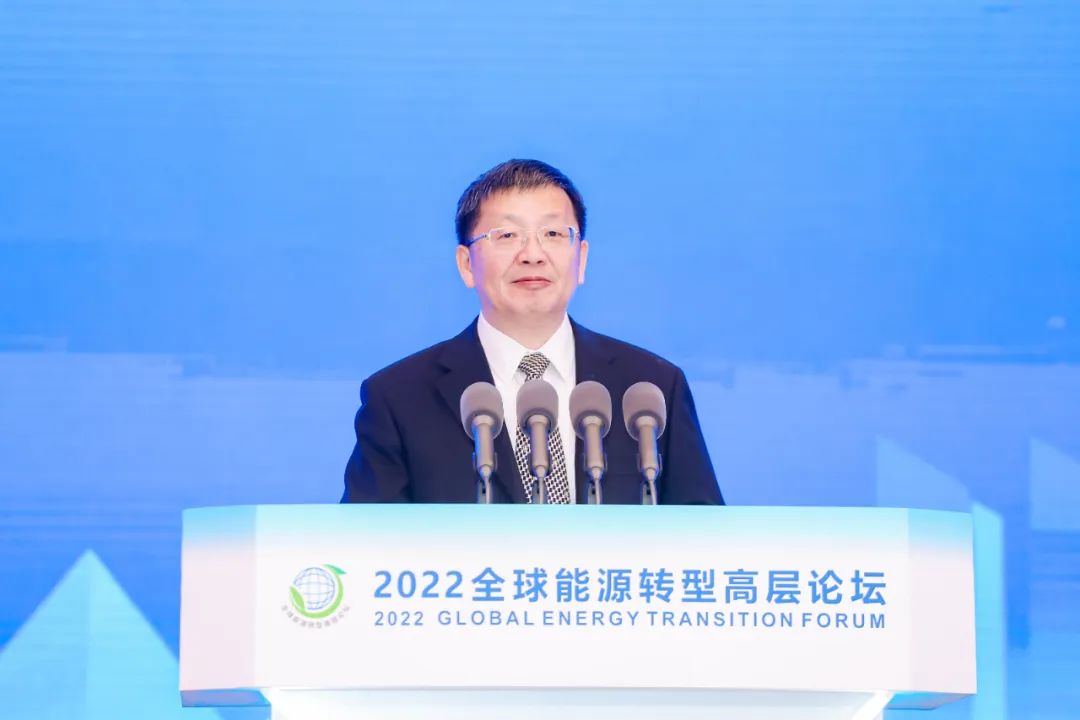Time:2022-09-19 Reading:15065

"In the complex and severe situation of global energy supply and demand, China's installed capacity of renewable energy exceeded 1.1 billion kilowatts this year," as introduced by Zhang Jianhua. He further explained that in the past decade, China's wind and solar power installed capacity has grown by approximately 12 times, accounting for 38% of the world's total installed capacity, and maintaining its position as the world's leader for many years. The new energy industry chain is globally leading, with seven wind turbine manufacturers ranking among the top ten in the world, and the photovoltaic industry contributing over 70% of the world's total output. With the rapid development of the new energy industry, China's low-carbon transformation in energy structure has made significant progress, and the environmental friendliness has significantly improved. In 2021, China's non-fossil energy consumption increased by 480 million t of standard coal compared to 2012, contributing to over 40% of the global increase in non-fossil energy consumption. The proportion of non-fossil energy consumption reached 16.6%, while the proportion of coal consumption decreased to 56%. Since the 18th National Congress of the Communist Party of China (CPC), it has decreased by an average of 1.4 percentage points per year, making it the fastest period of structural optimization in history. Zhang Jianhua emphasized that "the low-carbon transformation of the energy structure provides strong support for winning the battle against pollution and protecting blue skies." He also mentioned that clean heating in the northern regions has contributed to reducing PM2.5 concentration and improving air quality, with a contribution rate of over 30%.
At the same time, China's new energy
technologies are rapidly iterating, driving a new round of scientific and
technological innovation and industrial transformation. The country has
initially formed a relatively complete research and development as well as
equipment manufacturing industrial chain for new energy technologies. The
conversion efficiency of photovoltaic cells has repeatedly broken world
records, and technologies such as low wind speed power generation,
typhoon-resistant wind turbines, ultra-high towers, and high-altitude wind
power are among the world's leading. New progress has been continuously made in
large-scale energy storage, hydrogen, and other technologies, providing
stronger support for promoting energy development and transformation.
Furthermore, China's international cooperation
in the energy sector is deepening, jointly promoting global energy
transformation. With landmark international cooperation projects like Brazil's
Belo Monte Ultra High Voltage Direct Current transmission and Pakistan's
Karachi Nuclear Power Plant completed and operational, the "Belt and
Road" energy cooperation "circle of friends" continues to
expand, with partner countries reaching 33. Green development cooperation is
constantly deepening among these countries.
"In the past two years, the worldwide
energy supply tightness has warned us that we must promote energy
transformation under the premise of security," emphasized Zhang Jianhua.
On one hand, it is necessary to accelerate the secure and reliable replacement
of new energy sources, vigorously promote the construction of large-scale wind
and solar power bases, develop distributed renewable energy, build a new type
of power system, and enhance the capability to accommodate new energy. The
target is to achieve a total installed capacity of over 1.2 billion kilowatts
for wind and solar power by 2030. On the other hand, it is essential to fully
utilize the role of fossil energy as a backup guarantee, providing robust
support for energy security and sustainable development.
Zhang Jianhua pointed out, "In the
future, we must continue to improve the cleanliness of end-use energy and
actively implement electricity substitution. By 2025, electricity should
account for 30% of the final energy consumption ratio. We should actively
promote green energy consumption models, such as low-carbon transportation and
integrated photovoltaics in buildings. Additionally, we need to explore new
ways and approaches for substituting fossil energy with green hydrogen,
methanol, ammonia, and other alternatives. Upgrading and transforming the
energy consumption system will drive comprehensive green transformation in
production and lifestyle. Moreover, we need to strengthen the role of energy
technology innovation."
Zhang Jianhua stated, "Currently, energy
technology innovation is at a critical and opportune period. We must establish
a sound multi-level energy technology innovation system, continuously
strengthen research on cutting-edge green and low-carbon technologies, and
accelerate the transformation of scientific and technological achievements into
practical productivity."
The article is
sourced from the WeChat official account "Energy Development and
Policies."